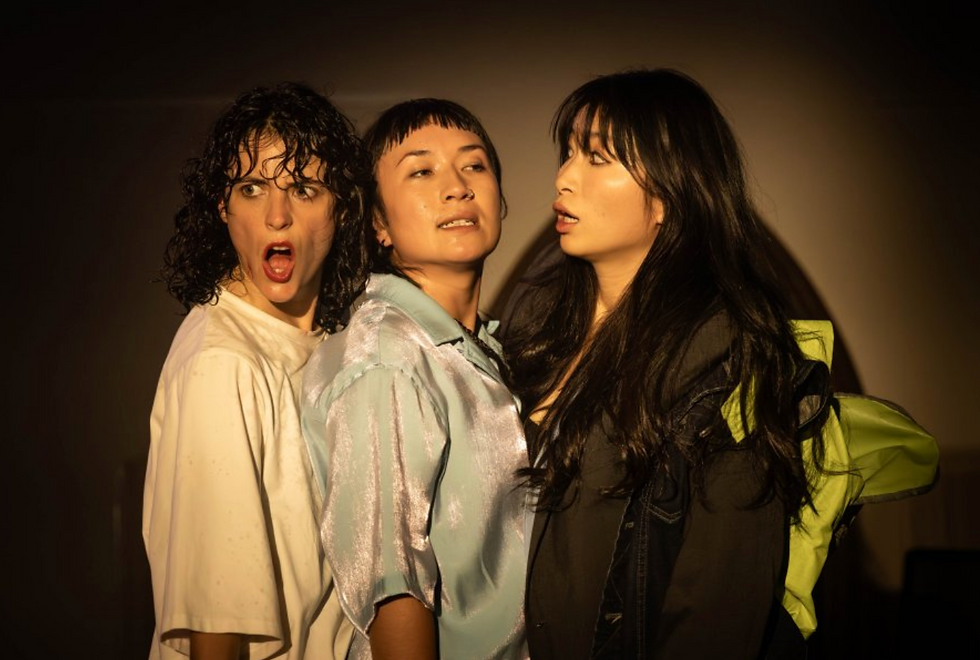Review: Muthering Heights at The Butterfly Club - Melbourne Fringe Festival
- Theatre Travels

- Oct 20, 2023
- 3 min read
Review by Thomas Gregory
Robyn Stickland was a middle-aged mother with gallstones who needed what is generally a routine operation. However, a severe allergic reaction to the anaesthetic jeopardised her life, and, for a moment, she even died. Years later, her children Julian and Tessa wrote a series of skits to explore what their mother went through during and after such a traumatic experience.
The overarching narrative of Muthering Heights follows a Robyn-as-puppet who had entered “the fairyland”, representing her time when she was medically dead. There, she is “helped” by mischievous creatures, challenges death to a scrabble match, attempts to seek help from a gnome, and meets a young South African girl. The play explores common themes such as a fear of death, legacy, and “living” with unresolved familial issues. As well as puppet shows, the production includes mixed-media performances, dance numbers, and even Blackadder fan fiction. An “intermission” in the sixty-minute performance involves some kind compliments and an intruder that amused everyone.
Julian and Tessa are more than willing to embarrass themselves for the sake of laughter, and the opening-night audience responds to their friends’ lack of shame with gusto. Some asides suggest rehearsals were a complicated affair between people who have “full-time day jobs”, and it does show. Often, one performer has to take cues from the other as to “what comes next”, which is most noticeable in the dance numbers. Fortunately, many of the improvisations and throw-away lines were the biggest sources of laughter from the crowd.
The puppet of Robyn, created by Elyce Phillips, is something quite impressive. In Tessa’s hands, it makes a convincing character who it was easy to empathise with. While the puppet moves about the stage freely, sometimes it joins others in a small “puppet theatre”, created by Gary Stickland, which takes centre stage. The rest of the set is a hodgepodge of artefacts that make a surprisingly compelling whole. Little details, such as the nesting dolls, add much to the show's aesthetic, and it is one of the more interesting sets I’ve seen at Fringe.
Unfortunately, the skits themselves have little substance. At best, they bring memories of those high-school variety nights, in which entertainment requires only that the child is willing to embarrass themselves in front of other students. Many of the jokes made no sense to those not in the world of these siblings, and many more rely on self-referential “apologies” for the low production cost or lack of polish to the script and acting.
Some shows have so specific an audience in mind, and the idea of appealing to the general public might not be the primary purpose.. Perhaps I am mistaken with the intention here, but my overall impression was that this show was not created so that a random stranger looking for a Fringe experience might enjoy themselves. Its creators were clearly having a wonderful time, and the audience on opening night simply loved it. It just wouldn’t be the best choice for a Fringe audience who can’t get to everything.

Image Supplied
A worrisome further note: this production advertises itself as a “relaxed sensory performance”. However, with loud yells, media displays referencing “a clockwork orange”, and constant changes to light levels, I feel it is important to warn that it may not be suitable for all those advertised to in such a manner.




